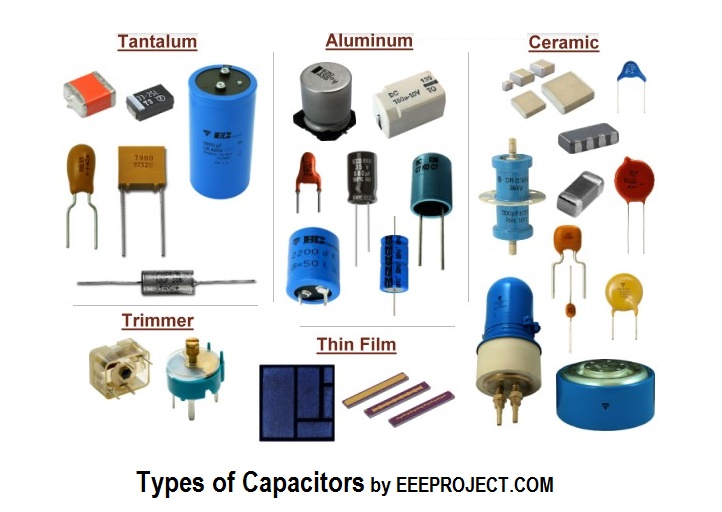
Capacitor
A capacitor is a passive electronic device with two terminals. These have the capability to store electrical energy in the form of an electric field. Though, the manufacturer decides the maximum amount of energy a particular capacitor can store.
To get a better understanding of capacitors, some knowledge of other passive elements will be helpful. You must refer the below articles to have a better understanding of the topic:
Basically, a capacitor consists of conductive parallel plates (two or more) which are electrically separated. They are generally separated by some good insulator, air or vacuum. This noninsulating region is called as dielectric.
Now, what is capacitance?
It is nothing but the effect of capacitor. Do you know, we have capacitors in or domestic fans also?
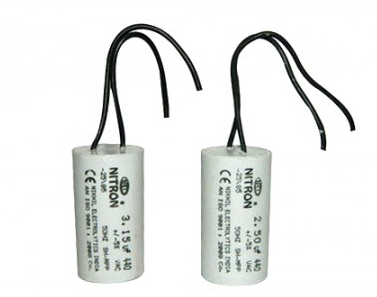
But what do we call it? Think!!!
Yes, we call this is as condenser. Actually, the capacitor was originally known as condenser or condensator.
Basics of Capacitor
The construction and physical form of capacitors vary widely and different types of capacitors are in use. As said above, most of these contain two metallic plates (electrical conductors) separated by some dielectric. The conductor may be an electrolyte, sintered bead of metal, foil or a thin film.
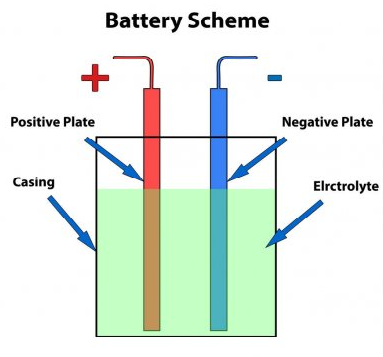
Now, you must get one doubt here!! Why do we need a dielectric?
Wanna guess!!! Common make it a try!!
This non conducting layer is used to increase the charge capacity of a capacitor. Interesting right!!
So what materials should we use for dielectric? Materials like mica, ceramic, plastic film, oxide layers and glass are good to use. Don’t worry, we will learn all these in our next section.
Properties of Capacitor
Capacitors are widely used in electrical & electronic circuits. Therefore, being a science person, you must know some important properties of capacitors. These are as follows.
- When a capacitor is connected in a circuit across a voltage, an electric field is created around dielectric. It causes net positive charge on one plate and negative charge on the other plate.
- Unlike an resistive element, a capacitor does not dissipate energy, rather stores it in the form of electric field.
- In an AC voltage (time varying voltage) applied across a resistor, at steady state (after long time) source effect ceases. Then capacitor discharges across the circuit and flow of current in the circuit is due to the capacitor.
Uses of Capacitors
In present scenario, an electronic capacitor comes in several styles, forms, lengths and materials in order to perform efficiently as per the requirement.
But, what does capacitors do? Why are they needed? What if they are not there? All these questions must hit your brain.
Let us try to find these answers.
Dear friends, capacitors are commonly used for filtering. It means a capacitor will provide power to the the systems it is embedded in, by increasing its quality. Like in micro controller, capacitors saves the micro controller and it doesn’t reboot due to voltage drop. Detailed uses of capacitors are as follows.
Small value capacitors are in use as:
- As components in power supply systems so that the current flows smoothly.
- As a parts of electric filters as well as tuned circuits.
- To bound signals amid stages of amplifiers.
On the other hand, a large value capacitor is useful in following manner:
- As a part in several types of electric motors.
- For storing energy in applications like strobe lights.
- For correcting power factor in various types of AC power distribution systems.
Now before learning the different types of capacitors, let us first understand the concept of parallel plate capacitor.
Parallel Plate Capacitor
As shown in the figure below, two parallel plates of same dimensions and conducting material is separated by an insulator. The insulator is called as dielectric and the whole arrangement is called as a parallel plate capacitor. When this capacitor is connected across a power supply, the positive terminal of the battery acquires the positive charge. While, the negative side of the battery acquires the negative charges. Since the opposite charges attract each other, therefore, they are trapped around the plates of the capacitor.
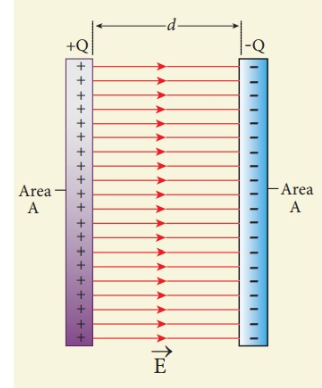
Principle of Parallel Plate Plate Capacitor
As we know that we can charge a plate, by supplying the power to it. On supplying more charge, the voltage (potential) increases and it may result in the leakage of charges. Now, if we place a neutral plate near to this positively charged plate, then the neutral plate will acquire negative charges on it. This happens because the negative charge flows towards the neutral plate.
Now, both the plates have charges. Plate 2 has negative charge which will reduce the voltage (potential difference) on plate 1. Similarly, the positive charge on the plate 2 will try to increase the potential difference of the plate 1.
But the question is which charge will have dominance in above case?
Of course the negative one. Isn’t it!!
Therefore, the potential difference on plate 1 will reduce overall. This makes the basic principle of parallel plate capacitor.
Role of Electric Charge in Capacitor
The next question that should pinch you is that how much electric charge can be stored and on what parameters will it depend on?
Let us try to find the answers.
Total electric charge stored in any of the parallel plate is directly related to the potential difference between the two plates of capacitor. Mathematically, this can be written as :
Q ∝ V
This proportionality constant is replaced by C (capacitance). Therefore,
Q = C * V
where C = capacitance of the capacitor in Farad, V = voltage between two plates and Q = Amount of charge in a capacitor
I guess, we have got few answers of all the above questions. Fantastic!
Let us now dive deeper to see the parameters affecting the capacitance of a capacitor.
The Capacitance of Parallel Plate Capacitor
The amount of charge that a capacitor stores is determined by the capacitance of the capacitor. From above equation, it is very clear that the more the more the value of capacitance, the more the charge storage.
Now, we must know the factors that affects the capacitance. They are:
- Area(A) of the distance (medium) between the plates.
- Distance between the two parallel plates (d).
Let us see the mathematical relations between them, according to the Gauss Law, the Electric field is given as:
E = Q/(ε * A) ; Ed = V = (Q * d)/(ε * A)
We know that, V = Q / C , therefore by comparing the equations, we have
C = (ε * A )/ d
With this formula you can easily tell that when the capacitance will be maximum. That is if the distance between plates is minimum and the area is maximum. This makes capacitance a very large value and hence, more energy storage.
Charge on Parallel Plate Capacitor
To calculate the charge on the plate, we need to assume that the capacitor is electrically neutral. Then with capacitance C and electric charge Q the energy stored by the capacitor can be given as:
U = 1/2(C * (V^2))
or if we put Q = CV in above equation then it becomes,
U = 1/2(Q *V)
where V is the potential difference in the parallel plates. Now, the question arises that what if the voltages on the plates are different?
Common friends ! This is an easy one! Isn’t it?
Let us say the two different voltages on the plates are V1 & V2 and let the charges on the respective plates be Q. Then the above equation changes slightly as:
U = 1/2 (Q * (V1 – V2))
Let us now switch to the different types of capacitors.
Types of Capacitors
There are several different types of capacitors and each type of capacitor has its own advantage as well as applications. Few major and widely used types of capacitors are listed below.
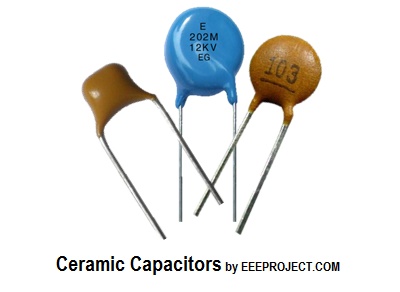
- It is one of the most common types of capacitors generally used in almost every application right from audio to RF.
- The operating range of this type of capacitor is in between few pico farads to 0.1 micro farads.
- This type of capacitors are less costly.
- Also they are more reliable when compared with other types of capacitors.
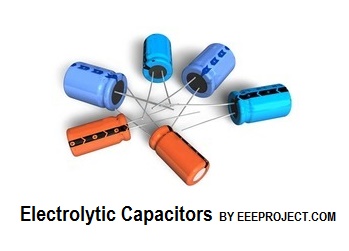
- This type of capacitors are polarized.
- The best thing about electrolytic capacitors are that they provide high capacitance values.
- Along with this, Electrolytic Capacitors can easily be used in low frequency applications such as audio coupling & decoupling applications, power supplies etc.
Silver Mica Capacitor
- This type of capacitors are not in vogue but are still able to offer accuracy, low loss and high level of stability.
- Generally, silver mica capacitors are used in such places where space is not an issue. That is they eat lot of space in installation.
- A silver mica capacitor is limited to maximum of 1000 pF.
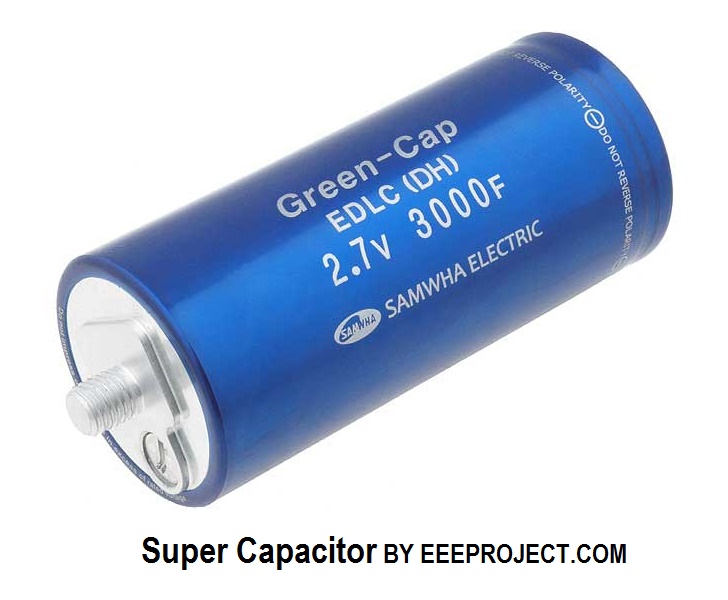
- This type of capacitor is also known by several other names like supercap or ultra capacitor.
- Super-capacitors holds very large values of capacitance due to which these are generally used in big electrical components where requirement of capacitance is always high.

Variable capacitors
- LC circuits generally use these capacitors.
- The main characteristic of a variable capacitor is that we can change its capacitance electronically or mechanically.
- A variable capacitor comes in several mechanical special forms. Few of them are multiple sections, split stator, differential and butterfly.
Tantalum Electrolytic Capacitors
- This type of capacitors are same as electrolytic capacitors and comes in both surface and leaded mount formats.
- Manufacturer of a Tantalum Electrolytic Capacitor design special circuit rules in order to execute it in safe environment.
Applications of Capacitors
Capacitors have many uses in electrical and electronic systems. The importance of capacitors are of high level. You may wonder that an electronic device without at least a capacitor is not possible. Following is the list of some common applications.
Energy Storage
- A capacitor charges itself when voltage is given to it. But after it disconnects from the charging unit, it starts supplying the stored energy.
- Also capacitors act like temporary battery when batteries get change.
- In audio systems of car, large capacitors store energy for amplifier.
Power Conditioning
- In power supplies, we use reservoir capacitors. They smooth the output of rectifiers (Full wave and Half Wave Rectifiers).
- These act like filters in dc circuits to smoothen the output.
Power Factor Correction
- Capacitors improve power factor in electrical power system.
- These capacitors have unit as VAR (volt-ampere reactive), rather than Farad.
Some more important applications are:
- Signal coupling and decoupling
- Snubbers and noise filters
- Low pass and high pass filters
- Pulsed power and weapons

13 thoughts on “Capacitor it’s Types and Applications”
which capacitor should i use in 120v AC supply ?
You must use the capacitor of higher voltage rating then 120V. I would suggest you to use 220V. Additionally you must consider the µF value which depends on the purpose for which you need the capacitor.
What types of capacitors are used in my ceiling fan ?
For the ceiling fans Polyester type capacitors are mostly used.
is there any type of capacitor which has two capacitance values and has three pins ?
No, Didn’t heard or read some thing like that.
what would become of the total capacitance if we connect them in series and later in parallel ?
Well connecting the capacitors in parallel does increases the resultant capacitance value and when they are connected in series it decreases the capacitance value.
for series : 1/C = (1/C1)+(1/C2)
For parallel : C = C1 + C2
Hope, that helped you..
Great page!
I have a broken capacitor. I believe it is in the audio input thru circuit. It is labeled MDZ 024. Any idea on the value? Thank you in advance.
Great page!
I have a broken capacitor. I believe it is in the audio input thru circuit. It is labeled MDZ 024. Any idea on the value? Thank you in advance.
Best Regards,
Marcus
Which capacitors do Chargers use?
I apliciate
Thanks, what happens if I remove a capacitor on an electric board does it stop working?